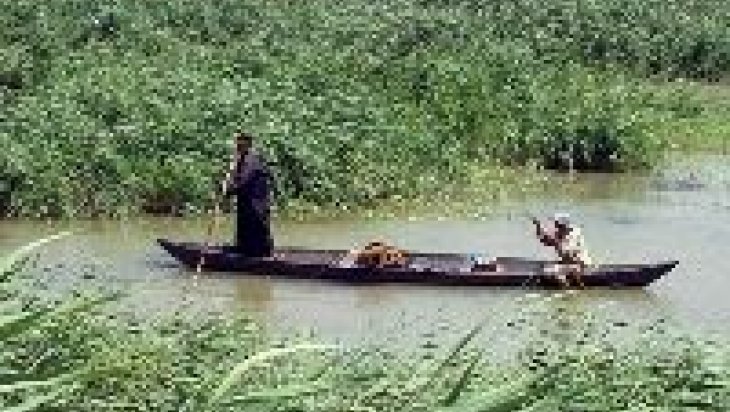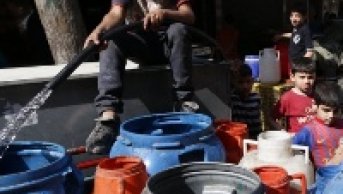Restoration of Iraq's Basra Marshes

Along with the water shortage in Iraq, the risk of destruction of the wetlands located in the south of Iraq has stayed on the agenda for a long time.
With their socio-cultural and environmental importance, the Basra Marshes -formerly known as the Mesopotamian Marshes- are the largest wetlands of the Middle East. The marshes, which extend over the provinces of Basra, Missan and Thi-Qar, comprise three marshes: the Central, Hammar and Hawizeh marshes.
Today 90 percent of the wetlands, which have been destroyed since the 1970s, have been lost. The main problem is deterioration of the wetlands, the lack of drinking water and sanitation. As a result of pesticides, untreated industrial waste, canalization and salination, water quality has reached a level that threatens human health and living organisms. The most important factor that has led to the drying up of the marshlands was in the 1990s, when Saddam Hussein instigated a project to redirect the waters feeding the marshes in order to punish the Marsh Arabs living in the marshland regions who rebelled against him. The wetlands shrank by 10 percent after Saddam's initiative was launched. The area, where a half million people lived, started to dry up within two years. This situation, defined by the United Nations as an “environmental and human disaster,” led to the destruction of fish and plant life in the region. Thousands of people who made their living from the reeds and fishery had to relocate. It is estimated that the whole area will be completely destroyed if measures are not taken within five years.
The United Nations Environment Program (UNEP) launched a project, “Support for Environmental Management of the Iraqi Marshlands,” in 2004. The project aims at supporting the sustainable management and restoration of the Iraqi marshlands. The restoration of the wetlands with a surface area of approximately 15.540 square kilometers is a glimmer of hope for those who left the region and who may return. The first stage of the UNEP project, which was completed in 2009 and composed of three stages, was carried out between 2004 and 2007. The first stage, with financial support from the Japanese government, includes data collection and analysis, capacity building, developing EST (Environmentally Sound Technology) systems and raising awareness in society of the issue. Progressing in two parts (A and B), the second stage -- which was carried out in parallel with the first stage and financed by the Italian and Japanese governments -- continued between 2006 and 2008. Stage A includes supporting data collection on water resources and analyses, and supporting environmental, socioeconomic and land planning studies. Stage B, on the other hand, includes the implementation of a pilot project to supply drinking water, implementing EST systems and providing community participation.
From 2007 to 2009, the last stage was supported by the Japanese government. This stage includes creating the necessary infrastructure for the treatment of wetlands and solid waste, enabling EST systems and public participation, and analyzing the data obtained. Iraq's Ministry of Water Resources, the Center for Restoration of the Iraqi Marshes, the Iraqi Ministry of Environment and the Iraqi Ministry of Municipalities and Public Works also participated in the project.
In addition, pilot projects for drinking water, sanitation, marsh rehabilitation and management were implemented. Research stations were established so that the marshes can be monitored, and data on such things as water quality and biological diversity can be collected. Fifty percent of the marshlands have been restored following the launch of these projects.
Although the projects have been successfully implemented, ecosystem rehabilitation is a long process. The requirement for a sustainable management of this area was asserted to be on the national development agenda as a priority. The two-year-long drought led to a decrease in the water level in the wetlands in 2009 and the deterioration of vegetation. Drought, desertification, climate change and a decrease in precipitation affected the water shortage across the country.
The largest wetlands of the Middle East have great importance in ecological terms besides being important for its residents, who are known as Marsh Arabs. In order to restore the marshes again, the Iraqi Ministry of Water Resources added 11 billion cubic meters of water to the water estimates of the ministry for 2015. In total, the amount of water needed for the marshlands is 67 billion cubic meters.
International organizations and the Iraqi government are striving to save the Basra Marshes. So too is the NGO Nature Iraq, which was founded in 2004 by Dr. Azzam Alwash, winner of the 2013 Goldman Environmental Prize, with the aim of protecting nature and historical heritage.
Nature Iraq is carrying out work to make the marshlands Iraq's first national park. NGO representatives said they have included the area on the Ramsar List of Wetlands of International Importance. They are also drafting a legislative framework for the protection of the area.








